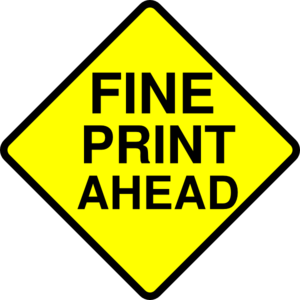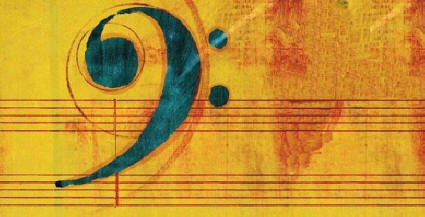For your final project, you may utilize any of the analytical techniques that we have studied in this course:
Listening
Traditional
Schenker Improvisation If you wish to do your final project using a different type of analysis, or a combination of techniques, let me know and we can discuss it. Select a piece that will lend itself to the requirements listed below. These requirements do not specify the length or type of piece.
However, a shorter piece would therefore require a much more detailed or in-depth analysis than a more extended work.
On the other hand, a very large work
would not give you the opportunity to
analyze beyond a very surface level. Take that into consideration.  Do not write a "blow by blow" description, such as "In the next measure . . . " Analyze the score and then write about the analysis. Do not write a "blow by blow" description, such as "In the next measure . . . " Analyze the score and then write about the analysis.
Use questions like the following to drive your narrative: What did you find that makes this piece worthy of analysis? What surprised you? What specific factors connect the piece to the composer? To the time? To the culture? To the style? What insight can you give to the performer(s) that would help
them to perform the piece more musically? More authentically? 
Requirements
-
The paper must be 3000 words,
exclusive of cover sheet,
references, diagrams, examples, or
illustrations. Use the word count feature under the Review tab in Word to ensure you have fulfilled the requirement.
No, seriously, count them because I
will. -
You may include background information on the piece you are analyzing - who wrote it, when it was written, why it was written, etc. prior to the analysis. However, this introductory material should not exceed 1 page in length. -
Do not just do a blow-by-blow description of your piece. Be sure to discuss your analysis at the end and conclude your paper with remarks related to what you found in your analysis.
-
When referring to a specific note,
use octave identification,
specifically the system in which C4
= middle C
Octave identification -
The paper must include examples from your score to illustrate your analysis. Do not include large sections of the score, but only the specific part that illustrates the point you are making in your paper.
Make sure you label these figures correctly according to your APA manual.
These are NOT labeled as "Examples"
- see your APA manual for correct
formatting of figures (p. 225). -
You may include a detailed analysis or graph of your score as an appendix to your paper.
Do not submit it as a separate
document. -
Nothing in your paper or analysis may be hand-written. Use a notation program to produce any examples. -
Follow the APA style guidelines strictly. For this analysis, you will need to cite any sources you use for background material. This will require references at the end of the paper and in-text citations in the body of the paper. -
Your paper does not require an abstract. Please
use the APA template linked on the
APA page.
Note: The style used most frequently in the music theory discipline is not APA, but Chicago. However, APA is the preferred style in the discipline of music education, and since you are working on a music education degree, I am asking you to write in compliance with APA guidelines. Yes, I know we should all get on the same page and it is a pain!  Review Writing for the appropriate guidelines and APA Style for formatting. Remember that any outside sources you use in developing your paper should be cited. I will also be asking you to submit your papers through Turnitin. Although I believe all of you to be persons of integrity, checking your writing this way helps you to know what text you may be using that should be cited.
TURNITIN.COM INSTRUCTIONS In order to post your paper to the site, you will need to create a profile and join the “Master of Music in Music Education” class.
The login page is here: http://www.turnitin.com/login_page.asp Click to create a user profile. In the next window, "Create a New Account" and choose "Student" If you already have a turnitin.com profile, just log in to your account and look for the button that says, "enroll in a class."
Your class ID number is
19964774.
Enrollment password is TSUMM
How to submit your paper:
Click on the class name Click on the Submit button to the right of the assignment name (paper) Select the “single file upload” from the “choose a paper submission method” menu Enter your name for “submission title” Click browse to find the file on your computer Find the file on your computer and click open Click upload Click submit to finalize the submission
A few minutes after submitting, you will get an originality report. Don’t be alarmed if your report shows a low percentage (still in the green). Common phrases and titles will often show a match, but check those for fair use. If your report shows a higher percentage (in the yellow or red areas), you may need to revise your paper or add more citations. If you need additional instructions, follow these links - they have a training center and a help center |
After submitting your paper through Turnitin, make any revisions necessary and submit the final project in
Canvas. Grading Rubric
Criteria | Performance Indicators | Failing | Poor | Fair | Good | Excellent | Content | Paper fails to meet content requirements. | Adequate knowledge of analytical techniques is not sufficiently evident. Paper appears to be hastily written. Arguments are unsupported Exploration of the topic is superficial or contains numerous accuracies. Movement between ideas is abrupt or illogical. Introduction and/or conclusion are missing or incomplete. | Paper shows some knowledge of analytical techniques. Paper includes some inaccuracies. Ideas are somewhat difficult to follow. Introduction and/or conclusion are truncated or unclear. | Paper shows familiarity with standard analytical techniques. Readers may be left feeling that some aspects of the subject have not be explored. Paper reviews what others have written about the topic. Ideas are arranged logically. Introduction and conclusion are clear. | Paper shows extensive knowledge of analytical techniques. Readers’ questions and objections are anticipated and answered. Writer provides new information, clarity, or a unique perspective to scholarly discussion of topic. The paper is organized, logical, and supported. An inviting introduction and a noteworthy conclusion are present. | | 0 points | 21 points | 24 points | 27 points | 30 points | |
Writing Mechanics | Unacceptable deviation from standard usage of
grammar, tense agreement, or
other sentence structure
elements, spelling, punctuation,
capitalization, abbreviations,
and numbers. | Multiple
errors in grammar, tense
agreement, or other sentence
structure elements, spelling,
punctuation, capitalization,
abbreviations, and numbers. | Several
errors in grammar, tense
agreement, or other sentence
structure elements, spelling,
punctuation, capitalization,
abbreviations, and numbers. | Minimal errors in grammar, tense agreement, or other sentence structure elements,
spelling, punctuation,
capitalization, abbreviations,
and numbers. | Writing is grammatical. Words selected create sentences that are clear, varied, complete, and uncluttered. Words are explained when necessary. Tenses agree, as do subject-pronoun, subject-verb, and pronoun-reference.
Words are spelled correctly;
rules of punctuation,
capitalization, abbreviation,
and numbers are observed. | | 0 points |
21 points |
24 points |
27 points |
30 points | Audience Voice Tone | Unacceptable deviation from formal language and word usage. | Significant deviation from formal language and word usage. | Some deviation from formal language and word usage. | Minor deviation from formal language and word usage. | Writing is directed toward an academic audience and is free from clichés, jargon, inappropriate colloquialisms. Diction is formal, avoiding I and we, slang, and contractions. | | 0 points | 7 points | 8 points | 9 points | 10 points | Use of Sources | Material from other authors appears to have been cut-and-pasted into text. | Direct quotes often used unnecessarily. | Direct quotes sometimes used unnecessarily. | Material from other authors is credited and used as supporting evidence. | Material from other authors is smoothly integrated into text. Quotations are limited to statements that are particularly striking or examples in which the source’s precise wording is important. | | 0 points | 7 points | 8 points | 9 points | 10 points | Format | Unacceptable adherence to APA style. | Many errors in APA style. | Several errors in APA style. | Minor errors in APA style. | Writing, source documentation, and references follow correct APA style. | | 0 points | 14 points | 16 points | 18 points | 20 points | Total points | |


Created and maintained by Vicky V. Johnson |
